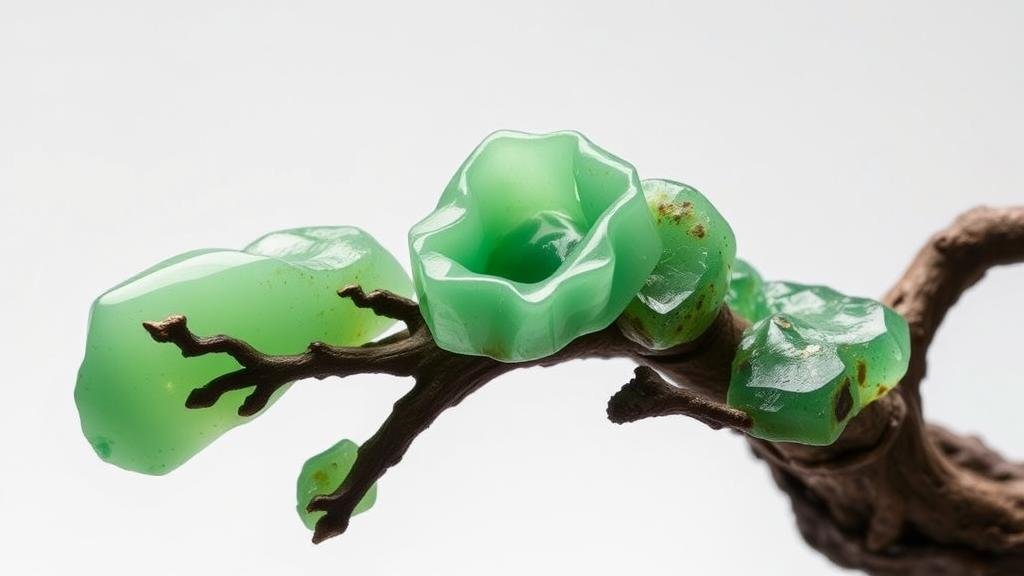Jade Treasures: Following the Green Path of Ancient Gem Hunters
Jade Treasures: Following the Green Path of Ancient Gem Hunters
The allure of jade has captivated civilizations for thousands of years, earning it a place of reverence in cultures worldwide. For rockhounds and mineral collectors alike, understanding the journey of jade–from ancient treasures to modern collectibles–offers a deeper appreciation of this prized stone. This article explores the history, types, properties, and practical tips for jade collecting, guiding enthusiasts along the green path of ancient gem hunters.
Historical Significance of Jade
Jade has been carved and sought after since prehistoric times, particularly in regions such as China, Central America, and New Zealand. significance of jade in these cultures often transcended mere aesthetics; it represented power, spiritual strength, and even immortality. For example, ancient Chinese emperors prized jade for its supposed ability to ward off evil and its connection to the afterlife.
In Mesoamerica, the Olmecs and Maya used jade to craft intricate rituals and objects, believing it held cosmic significance. This enduring reverence showcases jades multifaceted role in various societies, establishing it as a treasured component of human history.
Types of Jade: Nephrite vs. Jadeite
Jade primarily consists of two chemically distinct minerals: nephrite and jadeite. Understanding these distinctions is crucial for collectors.
- Nephrite: Composed of a calcium and magnesium silicate, nephrite is typically softer and has a more fibrous structure. It tends to be more abundant and is often found in shades of green, brown, and gray. hardness on the Mohs scale ranges from 5.5 to 6.
- Jadeite: A pyroxene mineral that is regarded as the more valuable of the two, jadeite features a denser and more crystalline structure. It comes in a wider array of colors, including lavender, yellow, and white, with a hardness of 6.5 to 7 on the Mohs scale.
Both types of jade are revered, but their distinct properties influence their market value and applications.
The Color Spectrum of Jade
Jades coloration arises from various trace elements within its mineral composition. The most sought-after hue is a vibrant emerald green, which signifies high chromium content in jadeite. Other colors have different values and meanings:
- Green: Most commonly associated with prosperity and good health.
- Lavender: Often symbolizes tranquility and grace, jadeites lavender form is increasingly valued.
- White: Represents purity and is often linked to the afterlife in traditional Chinese culture.
When evaluating jade for purchase, collectors should consider the saturation, tone, and uniformity of color as key factors influencing value.
Collecting Tips for Rockhounds
As you embark on your journey to collect jade, consider the following practical tips to enhance your collection effectively:
- Do Your Research: Familiarize yourself with the features of nephrite and jadeite. Attend gem shows, workshops, or join online forums to exchange insights with experienced collectors.
- Examine Documentation: Always procure jade from reputable dealers who can provide authenticity and quality documentation. This is especially crucial for identifying jadeite and distinguishing it from imitation stones.
- Learn to Evaluate Quality: Familiarize yourself with the grading criteria for jade. Key factors include color, clarity, and texture–higher-quality jade exhibits a smooth, glassy luster and minimal surface imperfections.
- Network with Fellow Collectors: Participate in community events or local rockhounding groups. Networking can lead to unique finds and valued connections in the mineral collecting community.
The Modern Market for Jade Collectibles
The global jade market has seen significant growth, influenced by various factors, including cultural trends and increased recognition of jades aesthetic value. According to a market analysis by Research and Markets, the global jade market was valued at approximately 10 billion USD in 2020 and is projected to grow at a compound annual growth rate (CAGR) of about 5.7% through 2026. This growing interest provides opportunities for both seasoned collectors and newcomers.
Conclusion: Embracing the Green Path
As you delve into the world of jade collecting, recognize that each piece carries a rich tapestry of history and significance. Embracing the journey of ancient gem hunters offers insights into cultural heritage, craftsmanship, and the natural beauty of jade. Collecting jade is not merely an act of acquisition; it is an exploration of artistry, spirit, and the alignment of past and present.
Ultimately, navigating the complexities of jade collecting involves knowledge, patience, and a commitment to sourcing responsibly. By appreciating and valuing jade, collectors contribute to the preservation and appreciation of this ancient gem, ensuring its legacy endures for generations to come.


